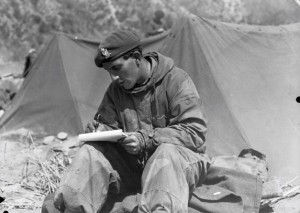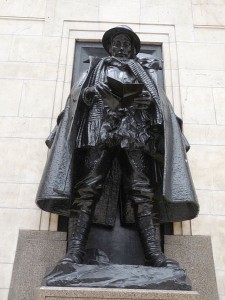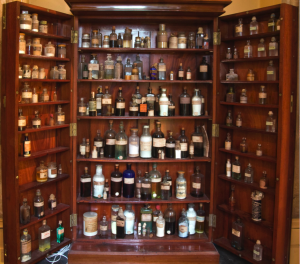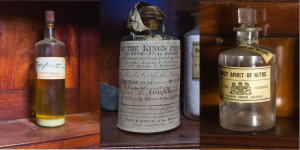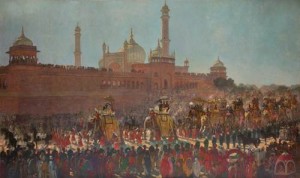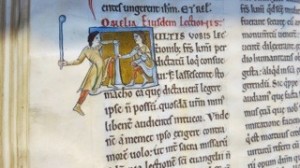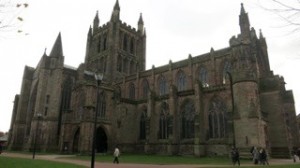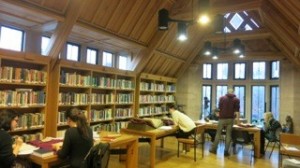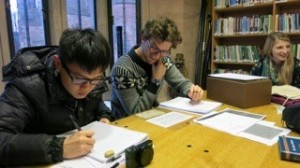Our series by new lecturers continues with a piece by Will Pooley, Lecturer in Modern European History, who brings together his work on the histories of folklore and witchcraft with this blog on the strange case of ‘Father Bloodsucker’:
I’ve come across a few pretty weird cases in my ongoing search to find crimes involving witchcraft in France between 1791 and 1940, but perhaps none are stranger than the story of ‘Father Bloodsucker’ (Le Père Sangsue).
This is how the violently anti-clerical and republican newspaper La Lanterne told the story at the time:
The following events took place in a small village in the Gers, where there lived an ugly old man who had been dubbed Father Bloodsucker, who lived by a pond teeming with eels and leeches. But nobody dared to fish in the pond, which was considered bewitched!
Father Bloodsucker claimed to be a witch, exploiting the terror he inspired in order to extract food and tobacco from the local population.
But one local man, Jacques Drux, refused to give in, driving Father Bloodsucker out of his house with his cudgel. Father Bloodsucker decided to take revenge.
He managed to gain the trust of both Jacques Drux’s daughters. He made them believe that the Kingdom of Leeches lay under his pond, and that he himself was King.
Every month, he was transformed into a leech and would go to see his subjects. Underwater, there was a wonderful palace.
Finally, he told them that any girl who threw herself in the pond on the night of the full moon at midnight, will be turned into a mermaid, and become princess of the leeches.
Inspired by his words, the young girls, Jeanne and Madeleine, arrived one night, determined to take the plunge. Jeanne rushed in first. Madeleine was about to follow her, when she saw a terrible head grinning in the rushes nearby. Father Bloodsucker had therefore not turned into a leech at all!
Madeleine realized the horrible truth and ran away, mad with terror. The next day, the locals found the body of Jeanne, with hundreds of leeches attached.
The old rascal has not been seen since.
Several things immediately make me suspicious about this story with its strange Freudian undertones:
-The vagueness of the location. Newspapers tended to either report the exact location of witchcraft cases, down to the hamlet or street where events took place… or they would use anonymised details, and ellipses to draw a veil of privacy over personal tragedies.
–The apparent blind credulity of the rural population. This is largely inconsistent – no matter what the newspapers claimed – with how people actually behaved in accusations of witchcraft. Many participants were skeptical, empirical, and careful, but confessed confusion and dismay at events they did not understand. In the case of Father Bloodsucker, though, the entire local population supposedly falls for his deception, and the young daughter of Jacques Drux are particularly vulnerable. This discourse of female credulity and superstition was the stock in trade of anti-clerical publications like La Lanterne.
–The fairy elements of a hidden world where a humble outcast is actually king. The story sounds suspiciously like a folk tale. There are a whole set of tales where it tends to be heroes (rather than villains) who persuade their enemies to jump into lakes or rivers, claiming there are submarine realms where they can become rich. If crimes involving supernatural beliefs such as witchcraft were fairly common (there were often three a year mentioned in the national press), this is the first time I have seen any evidence of a crime based the fairy world in France. Perhaps there are similarities here to the famous case of the murder of Bridget Cleary in Ireland, but even that is quite different to Father Bloodsucker. Bridget’s murder had many of the features of intra – family conflict, misfortune, and ill-health that characterise witchcraft crises.
–The characterisation and motives of the protagonists. These all sound rather fanciful, and stereotyped, more like how urban writers imagined the moral conflicts of the countryside than how people there actually behaved.
And it turns out I am right to be suspicious.
Twenty five years before this story appeared in La Lanterne, the Beaumarchais theatre in Paris briefly hosted a piece called ‘Le Père Sangsue’.
I have had a quick look through library catalogues, and cannot find any evidence of a script for this show, but it may well be that this was the kind of light (?) entertainment that leaves little trace in the archives. If any does know anything about this show, or about the Beaumarchais, I’d love to hear more.
But is that the end of Father Bloodsucker?
My research is about the very real conflicts that French men and women engaged in over sorcery in this period. The story of literary representations of witchcraft during the same era is in many senses a completely different one, which Vincent Robert has begun to tell.
Or is it?
I can speculate about why La Lanterne chose to present a story that was almost certainly fabricated as if it were true. Perhaps they were simply passing on a badly researched legend, which may have come from the theatre piece, or may have been the inspiration for both the earlier theatre piece and the newspaper story itself.
Or perhaps they were making a point about the credulity of the French population. La Lanterne was very fond of referring to the Catholic priesthood in the same terms most other newspapers reserved for the fraudsters, magicians, and magical healers hauled before the courts in this period. Perhaps Father Bloodsucker was meant to be read allegorically?
Whatever the case, it seems important to me that this story could be presented as if true, because it suggests I have to be careful whose truth I am dealing with when looking through the newspapers. Did readers think this story was true? Might it have fed back into their own beliefs about the creepy old men who lived near their houses?
How to draw a firm line between fact and fiction?

